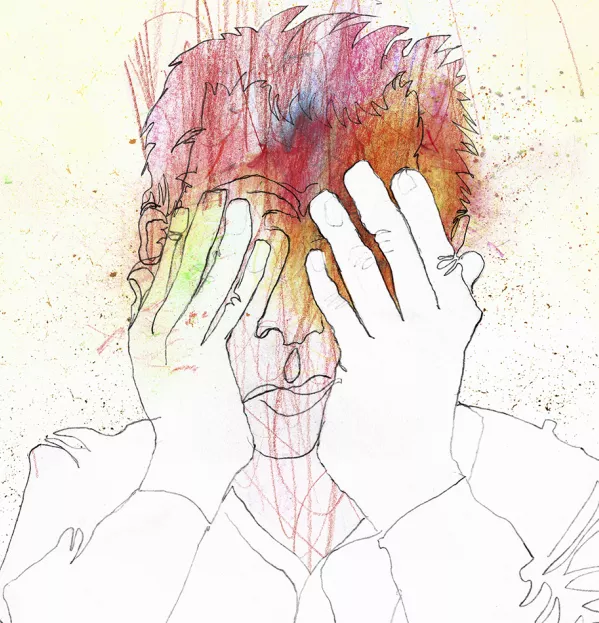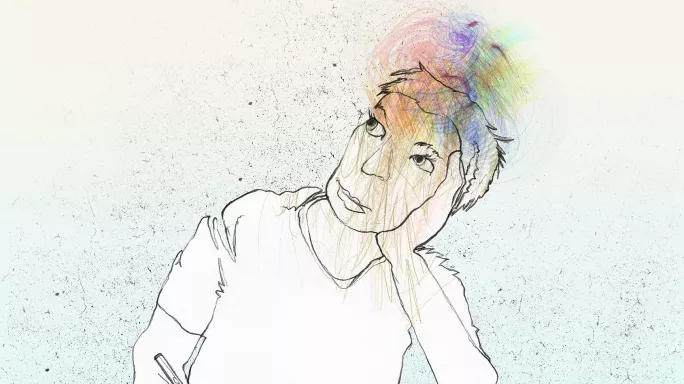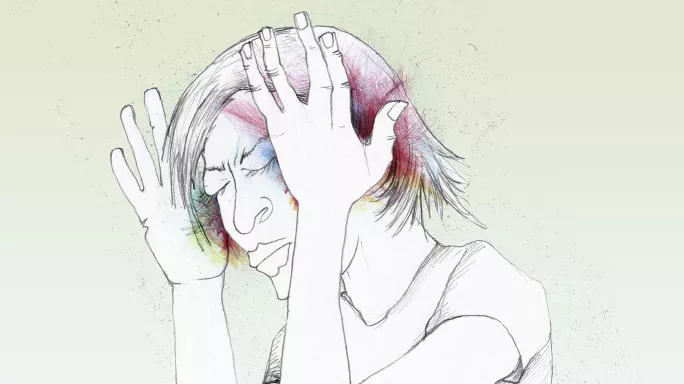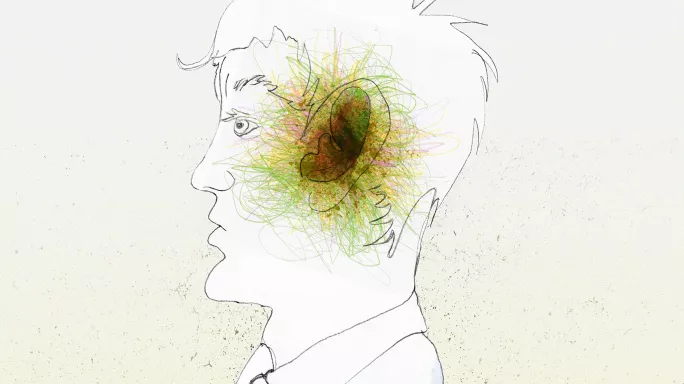Investigation: What’s behind Scotland’s ‘behaviour emergency’?

On 24 November, as members of the EIS teaching union and primary leaders’ body the AHDS took strike action over pay, another small group of teachers - members of NASUWT Scotland - also went on strike, but for a different reason: pupil behaviour.
Staff at Bannerman High in Glasgow had decided to take a stand against “violent and abusive pupil behaviour”.
The council says it does not recognise this characterisation of pupil behaviour at the school. Nevertheless, 25 teachers at the school made plans to strike for 12 days in the run-up to Christmas because they said the council wasn’t doing enough to “ensure teaching staff’s safety” and “restore order”.
These teachers were not alone in speaking up about behaviour in Scottish schools. At Northfield Academy in Aberdeen, the EIS teaching union revealed in November that 89 per cent of members at the school had voted to take industrial action over pupil violence and threats of violence, on a turnout of 69 per cent. The initial focus was on action short of striking, including refusing to teach certain pupils or classes.
The big question for the Scottish government is: are Northfield Academy and Bannerman High exceptions, or is there, as NASUWT Scotland is claiming, “a behaviour emergency” in Scottish schools, catalysed by the pandemic?
What do heads think?
Tes Scotland put that question to more than 20 secondary headteachers, who fed back their experiences on the condition of anonymity.
The response was stark: they all said that behaviour is worsening, while stressing that the issues centre on a minority of students.
They reported an increase in vandalism and violence, with pupils assaulting each other and being aggressive and confrontational towards staff, including threatening to kill staff.
Many headteachers pinpointed those students in the early years of secondary as the biggest challenge. These students tended to experience the biggest disruption to their education at the height of the pandemic, with usual transition arrangements made impossible by Covid restrictions.
Then, once they were back in school, policies to limit mixing meant they were not properly integrated into secondary school life. The upshot, according to school leaders, is that they have not adapted to the norms of secondary school behaviour.
Jim Thewliss, general secondary of School Leaders Scotland, says it is now “standard” for secondary headteachers to report challenges in S1-3 (Years 7-9).
“It’s to do with in-class behaviour and a lack of understanding of how a secondary school class operates, but also to do with about-the-school behaviour - think corridors, in the playground, in the dining hall - [about students] coming to a totally different, much larger, much more complex environment and not having a set of parameters within which to work.”
However, an increase in challenging behaviour is not just a secondary school issue. Greg Dempster, general secretary of the AHDS, is seeing “a notable increase in member contact relating to pupil violence and struggles seeking to access appropriate support for pupils”.
A rise in pupil violence in primary - especially early primary - was also raised by the EIS in November 2021. In written evidence to the Scottish Parliament’s Education, Children and Young People Committee, it said there had been “an increase in violent incidents arising from pupils’ distressed behaviour, most notably among P1 and P2 [Reception and Year 1] children who traditionally have been less likely to exhibit violent behaviour”.
The union said that in one area, over a period of a few days, one early primary teacher had suffered a broken jaw and damage to the eye socket from being kicked in the face by a pupil; another, in a different school, had a tooth knocked out, having been punched in the face by a child in P2.
In a Tes Scotland feature from March 2022, marking two years of Covid, primary school leader and early years teacher Anita Le Tissier said some children required specialist support going into P1 who would not have needed it pre-Covid.
“We’re picking up a year and a half behind in terms of routine and supporting families,” she said. Vulnerable children and their families had become “much less resilient at coping”, as they could not access services such as sleep training, speech and language therapy, and behavioural support from health visitor teams because “all of that stopped”.
So, managing behaviour is an issue across the board. But another, related factor is the difficulty in getting pupils into school in the first place and keeping them in classrooms.
Secondary headteachers say attendance is down nationally by about 5 per cent. In some year groups, in some schools, attendance now regularly falls below 80 per cent.
Secondary leaders also say they are grappling with a new phenomenon: dozens of students - “perhaps as many as a hundred” in some larger schools - are coming to school but not going to class. Instead, they wander the corridors until senior leaders and support teachers round them up.
Writing for Tes last month, Amy Forrester, an English teacher and director of behaviour and futures at a school in Cumbria, observed that this phenomenon - known as internal truancy - was also a fast-growing problem in England. It used to be about students not wanting “to attend a particular lesson for a particular reason”. Now, said Forrester, “packs” of pupils were roaming the school corridors.

One Scottish school leader said: “Teachers have upped their game in terms of differentiation and more appealing, relevant lessons, yet [for students] it’s still more fun to wander every day with their pals without fear of consequence.”
But why is there no fear of consequence? There is a sense that while pupils have got out of the habit of attending school, schools have simultaneously got out of the habit of addressing poor behaviour. Leaders say this is because schools wanted to show compassion to pupils and families in the wake of the pandemic, but that this more lenient approach has continued and now decisions not to sweat the small stuff - turning up late, not wearing the correct uniform, walking away mid telling off from a teacher - means pupils are exploring what other rules they can get away with breaking.
One headteacher said that the only tools a teacher had in response were “a telling off and the threat of phoning home”. Even then, they might not be able to rely on support because they encounter more and more parents “who absolutely refuse to allow a school to give any form of sanction”.
Is all behaviour communication?
One sanction that pupils and parents in Scotland are almost never faced with is exclusion: 2020-21 figures showed just one pupil being asked to leave their school and not come back.
Before their publication in December 2021, concerns had been expressed that temporary exclusions - where pupils are told not to return to school for a few days - might have risen because of Covid, not least because of the impact of the pandemic on pupils’ mental health. However, another significant drop in temporary exclusions was recorded, with cases falling from 14,987 in 2018-19 to 8,322 in 2020-21.
The figures came with a health warning - some of the decrease in cases was likely “due to the pandemic limiting the time pupils were in school” - but permanent and temporary exclusions have been falling in Scotland since 2006-07.
Maureen McKenna was Glasgow’s education director from 2007, retiring in 2021. She says that exclusion was a “habit” and a “reflex reaction” to challenging behaviour in schools when she started out, and that the big change that drove down exclusions in Glasgow was that behaviour started to be seen in a different light: teachers “don’t see it as bad behaviour but as distressed behaviour” and the idea that “all behaviour is communication” is a big training focus.
McKenna stresses, however, that exclusion will never be eradicated because there will “always be times when a young person needs to be taken out of a school for their own safety and the safety of other children”.
But headteachers say that, in some areas - even when behaviour is violent and threatening - exclusion is still not considered an option.
Tom Bennett is the UK government’s behaviour tsar, and the director and founder of researchED, a teacher-led project that aims to make staff research literate. A Twitter storm ensued when slides from his talk at a researchED gathering in Aberdeen in November were shared online. It was entitled “The secret behaviour crisis - and what Scotland needs to do about it”.
Bennett argues that not all misbehaviour “is a cry for help or has a therapeutic solution”, and that seeing it as such “makes responding appropriately harder”. He gives the idea that “all behaviour is communication” short shrift - and in his talk, he identified this as one of five “great myths of behaviour”. The other four myths were that all misbehaviour emerges from an unmet need; that trauma-informed approaches are suitable for all behaviour management; that restorative practices should replace sanctions; and that exclusions are inherently wrong.
Bennett’s mantra when it comes to managing behaviour is “routines, norms, consequences” and he argues that the right number of exclusions is “when they have to happen, and as a last resort, not zero”.

However, not everyone agrees.
Raymond Soltysek, a teacher and behaviour consultant, argued in a piece for Tes Scotland in April that policing problem behaviour didn’t work in the past and won’t work now. He said schools should praise positive behaviour and encourage staff to be “truly restorative” in order to make pupils more empathetic.
This is in line with approaches to managing behaviour that are extolled nationally: over the past two decades, there has been a move away in Scotland from punitive discipline to a focus on building relationships and promoting positive behaviour.
A Glasgow secondary headteacher tells Tes Scotland that a restorative approach is “a far more effective way of helping people understand the harm that their behaviour can cause” than traditional punitive approaches such as detention and exclusion.
“If you simply exclude a child for a day if they have been in a fight, for example, and then bring them back and tell them not to do it again, that doesn’t necessarily change their behaviour,” she says.
“A restorative approach leads to very, very powerful conversations exploring what happened, why it happened, who has been harmed and what the impact of that harm is, and what needs to happen to make it right.
“It is the furthest thing you could imagine from a comfortable conversation. It’s difficult but it has a lot of impact.”
However, one point that Bennett made is likely to garner more widespread support: that alternative provision has to be funded appropriately. The Glasgow headteacher - while disagreeing with punitive approaches to behaviour management - says that sometimes a mainstream setting will not be appropriate and there need to be other “pathways” available. Another secondary headteacher tells Tes Scotland that there has been an “exponential increase” in social, emotional and behavioural needs at the same time as the number of places in specialist schools has shrunk.
Similarly, Dempster sees an urgent need for primary leaders to have “an increase in appropriate alternative pathways and placements”, as well as “the resources, training or staffing levels to properly support some pupils in mainstream settings”.
The underfunding of inclusion, generally, is another issue that - like behaviour - is raised by headteachers and teachers with depressing regularity. And, of course, the two issues are intertwined.
Certainly, a call to rethink how education works in the 21st century was one of the key messages to come out of the 2020 review of additional support for learning. Author Angela Morgan found that how inclusive schools were - and how well they catered for all pupils’ needs - came down to “values, culture and mindset”.
Some teachers felt that additional support needs (ASN, or special educational needs and disability in England) were not part of their remit but, in an education system where a third of the children have ASN, Morgan argued that this can no longer be seen as “a minority area of interest” and made the case for “an overall universal baseline of inclusive practice”.
Headteachers say they would be better able to tackle some of the behaviour challenges they face if they had more control over school budgets. Some heads have the flexibility to determine their own mix of teachers and support staff - from family liaison officers and “campus cops” to office staff and classroom assistants - but it depends on the council they work in.

Headteachers also say that, in response to the challenges schools face, government behaviour policy is in need of a reboot post-pandemic.
But how should things change? One secondary teacher suggested that the introduction of “a national programme of nurture” would help, with academic work in the morning and games, hobbies, reading and homework clubs in the afternoon. But secondary head Bruce Robertson, writing for Tes Scotland in September, said that to improve behaviour, the focus should be on incrementally building a classroom full of “mutual respect and cooperation”, and on teaching pupils to behave. He said this fundamentally relied on the expectations of the teacher: “The higher these are, the more you will get from your students and the better they are likely to behave.”
Adequate funding is, of course, crucial regardless of the approach taken to behaviour. Yet headteachers see no upcoming influx of cash to address behaviour problems on the horizon - rather, they expect wide-ranging education cuts in 2023.
Councils say they are facing a £1 billion funding shortfall - equivalent to 17,500 teachers - and at the School Leaders Scotland annual conference in St Andrews last month, Lyndsay McRoberts, a former headteacher and now East Ayrshire’s education director, warned of “absolutely dire” budget cuts “like we have never experienced before”. Yet, as difficult as this would be, she presented an opportunity to do things differently.
And similarly, Morgan was clear in her ASL report that improvements could be made “despite the impact of austerity and the problematic resource pressures”.
However, her report, published in June 2020, was largely written before the pandemic forced schools to close. Now schools and families are faced with a cost-of-living crisis that has seen the Scottish government announce almost £1.2 billion of cuts - the latest £615 million worth of savings were set out by the deputy first minister John Swinney in November.
This all comes as the latest Scottish government statistics - published on Tuesday - show that more than a third of pupils have additional support needs.
The next report of the Behaviour in Scottish Schools research project - which has been delayed - could force the government’s hand on addressing behaviour in some way. It has been tracking how behaviour in schools is managed and levels of disruption since 2006, and a report was last published in 2017.
However, the new edition is not due out until the end of 2023. Headteachers say that, with the pandemic fuelling behaviour problems to previously unknown levels, action is needed before then. Perhaps budget cuts and the “national discussion” on education that has just closed will provide impetus for change - that is if there isn’t enough already, now that teachers are starting to strike over behaviour.
Emma Seith is a senior reporter at Tes Scotland. She tweets @Emma_Seith
Register with Tes and you can read two free articles every month plus you'll have access to our range of award-winning newsletters.
Keep reading with our special offer!
You’ve reached your limit of free articles this month.
- Unlimited access to all Tes magazine content
- Save your favourite articles and gift them to your colleagues
- Exclusive subscriber-only stories
- Over 200,000 archived articles
- Unlimited access to all Tes magazine content
- Save your favourite articles and gift them to your colleagues
- Exclusive subscriber-only stories
- Over 200,000 archived articles
topics in this article



